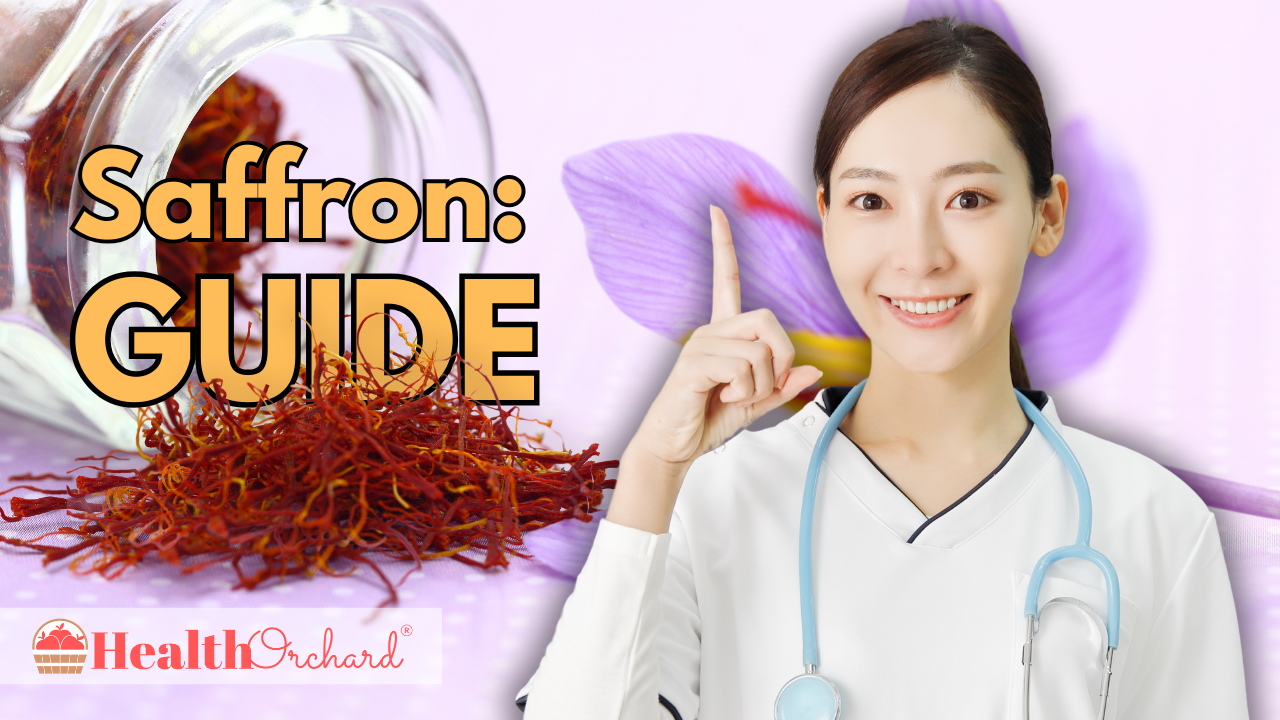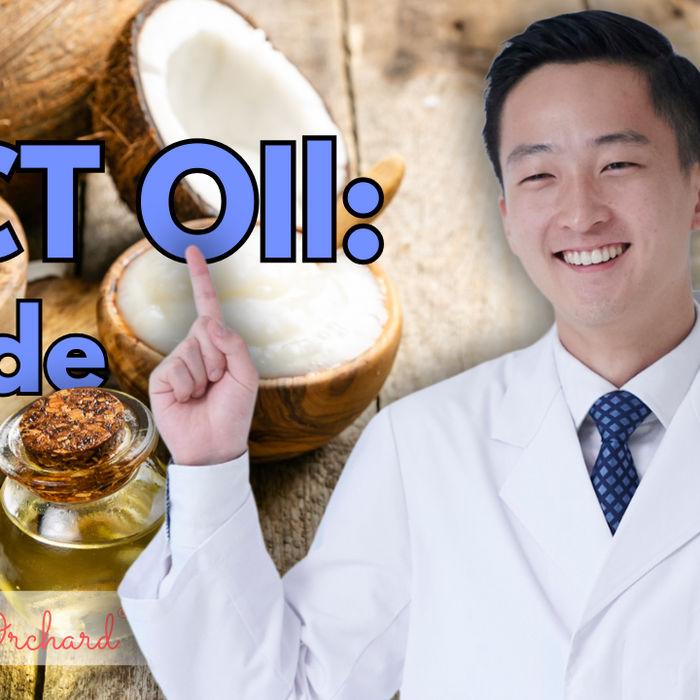

Saffron: Guide
Key Takeaways
- Saffron is a Premium Spice: Known as "red gold," it is the world’s most expensive spice due to its labour-intensive harvesting process and limited yield.
- Saffron Offers Multiple Health Benefits: It supports mental health, heart health, eye health and alleviates PMS symptoms through its unique bioactive compounds.
- Antioxidant-Rich Properties: Saffron's antioxidants, such as crocin and safranal, combat oxidative stress and inflammation, promoting overall well-being.
- Culinary Versatility: Saffron enhances dishes worldwide with its vibrant colour, unique flavour, and aromatic richness, making it a culinary treasure.
- Choose Authentic Saffron: Opt for red threads from trusted sources and regions like Iran, Kashmir, or Spain to ensure quality and avoid adulterated substitutes.
- Proper Storage is Essential: Preserve saffron’s quality by storing it in airtight containers in a cool, dark place.
Saffron, often referred to as red gold, is the most expensive spice in the world, with a history spanning over 3,000 years. A single pound of saffron can cost thousands of dollars, making it not only a culinary treasure but also a symbol of luxury. This precious spice is known for its vibrant red threads, distinct flavour, and remarkable health benefits.
Whether enhancing dishes like paella and biryani, being used in traditional medicine, or serving as a cultural emblem, saffron's versatility is unparalleled. At Health Orchard, we recognize the importance of choosing authentic and high-quality saffron to experience its full range of benefits.

What is Saffron?
Origin and Production
Saffron comes from the stigmas of the Crocus sativus, a delicate purple flower that blooms only once a year. The flowers are harvested early in the morning when the stigmas are freshest and least exposed to sunlight. Each bloom produces just three stigmas, which are carefully handpicked to preserve their potency and quality.
Major saffron-producing regions include Iran, which accounts for about 90% of global output, India (Kashmir), and Spain. These regions are known for their unique climate conditions, which impact the flavour, aroma, and colour of saffron. For instance, Kashmiri saffron is prized for its deep red hue, while Spanish saffron is milder and slightly sweeter.
Why Is It So Expensive?
Saffron's high cost is due to its extremely labour-intensive production process. Harvesting requires meticulous handpicking of the flowers and separating the stigmas, tasks that cannot be mechanized without compromising quality. Additionally, it takes around 75,000 to 80,000 flowers to produce just one pound of saffron, making it one of the rarest and most sought-after spices.
The cultivation and harvesting period for saffron is limited to a few weeks each year, further restricting its supply. Combined with high demand for culinary, medicinal, and cultural uses, saffron’s limited availability drives its market value. This exclusivity has earned saffron the nickname red gold.
Real Saffron vs. Substitutes
Authentic saffron is characterized by its rich red threads with slightly yellow tips and an unmistakable aroma. It has a unique, slightly bitter taste that cannot be replicated by substitutes such as safflower or turmeric. These impostors may look similar but lack saffron’s distinctive colour, flavour, and health benefits.
Powdered saffron, while convenient, is often mixed with fillers or dyes, reducing its quality and effectiveness. To ensure authenticity, always purchase saffron threads from trusted sources and test them by soaking in water; real saffron releases a vibrant yellow-orange hue. Investing in high-grade saffron not only enhances culinary experiences but also delivers its full health benefits.
Health Benefits Of Saffron
Nutritional Components
Saffron owes its health benefits to three key compounds:
- Crocin: This water-soluble carotenoid gives saffron its distinctive golden color while providing powerful antioxidant protection against cellular damage and inflammation.
- Safranal: The essential oil compound safranal creates saffron's signature aroma and demonstrates significant antidepressant properties by modulating serotonin levels in the brain.
- Picrocrocin: This glycoside molecule produces saffron's distinctive taste while offering neuroprotective benefits through its conversion to safranal during the drying process.
Potential Benefits
Mood Enhancement
Saffron has been clinically shown to alleviate symptoms of mild to moderate depression and anxiety, making it a natural mood booster. Active compounds like safranal and crocin positively influence serotonin levels, a neurotransmitter associated with feelings of happiness and well-being. These mood-enhancing properties have led saffron to be studied as a potential alternative to pharmaceutical antidepressants.
Studies have also highlighted its effectiveness in reducing stress and improving overall mental health. A meta-analysis of clinical trials found that saffron supplementation provided significant relief from depressive symptoms compared to a placebo. Its ability to enhance emotional balance without notable side effects makes saffron a promising option for mental health support.
Rich in Antioxidants
Saffron is packed with powerful antioxidants such as crocin, safranal, and kaempferol, which protect the body from oxidative stress. These compounds neutralize free radicals, reducing cellular damage that contributes to aging and chronic diseases. By combating inflammation, saffron helps maintain overall health and promotes the body's natural repair processes.
Regular consumption of saffron may also improve immune function due to its anti-inflammatory and cell-protective properties. Some studies suggest that its antioxidants may even play a role in cancer prevention by inhibiting the growth of cancer cells. This antioxidant-rich profile positions saffron as a valuable addition to a healthy lifestyle.
Heart Health
Saffron has been shown to benefit cardiovascular health by improving cholesterol levels and regulating blood pressure. Its antioxidant properties help prevent the oxidation of LDL cholesterol, which is a key factor in atherosclerosis, or the hardening of arteries. Additionally, its anti-inflammatory effects can reduce the risk of heart-related complications.
Research suggests that saffron may enhance blood circulation and reduce the likelihood of clot formation. Its potassium content aids in maintaining normal blood pressure, while its overall composition supports a healthier heart. Incorporating saffron into the diet can contribute to long-term cardiovascular wellness.
PMS Relief
Saffron is effective in alleviating common premenstrual syndrome (PMS) symptoms, including irritability, mood swings, and physical discomfort. Studies have shown that saffron’s active compounds can influence serotonin pathways, which play a key role in emotional and hormonal regulation. Women who consumed saffron experienced notable improvements in PMS-related mood and pain symptoms.
Clinical trials have demonstrated that even small doses of saffron can significantly reduce the severity of PMS symptoms. Its ability to naturally ease both emotional and physical discomfort makes saffron a popular choice for menstrual health. For those seeking natural alternatives to conventional treatments, saffron provides a scientifically supported solution.
Vision Improvement
Saffron has been studied for its potential to support eye health, particularly in slowing the progression of age-related macular degeneration (AMD). The spice contains carotenoids that protect the retina by neutralizing free radicals and enhancing blood flow to the eyes. This makes it a promising natural option for maintaining healthy vision as individuals age.
Research published in clinical journals has revealed that saffron supplementation can improve visual acuity and light sensitivity in AMD patients. By strengthening the eye’s photoreceptor cells, saffron may prevent or delay vision loss associated with retinal degeneration. Its unique properties make it a beneficial supplement for long-term eye health.
Tips for Buying Saffron
Identifying High-Quality Saffron
- Appearance: Pure, high-quality saffron threads should be uniformly crimson red with distinctive golden-orange tips, displaying long, unbroken strands that are dry and slightly brittle to the touch.
- Aroma: Genuine saffron releases a distinctive honey-like sweetness combined with metallic notes when rubbed between fingers, with the intensity of this fragrance indicating its freshness and potency.
- Taste: Premium saffron produces a distinctive slightly metallic, bitter flavor with no sweetness, while any sugary taste suggests the presence of adulterants or artificial coloring.
Trusted Sources
Purchase saffron only from established vendors with transparent sourcing and quality testing protocols that can verify their product's authenticity. Top saffron-producing regions including Iran's Khorasan province, Kashmir's Pampore region, and Spain's La Mancha area are known for cultivating the highest quality strands that meet international standards. Traditional family-owned farms and cooperatives in these regions often maintain centuries-old harvesting and processing methods that help ensure premium quality.
Certifications
The International Organization for Standardization's ISO 3632 classification is the global benchmark for saffron quality, measuring key factors like crocin content for color strength, safranal for aroma, and picrocrocin for flavor intensity. Category I certification indicates the highest grade saffron meeting strict requirements for chemical composition, moisture content, and physical characteristics. Professional buyers and serious home cooks should always look for ISO 3632 Grade I certification as it provides assurance of receiving genuine, high-quality saffron free from adulteration.
Storing Saffron for Longevity
Best Practices
- Use Airtight Containers: Store saffron in an airtight glass jar to protect it from moisture and air exposure.
- Avoid Light And Heat: Keep the container in a cool, dark place to prevent degradation from sunlight or high temperatures.
- Use Quickly: For the best flavour and potency, use saffron within two years of purchase.
Cultural and Traditional Significance
Religious Ceremonies
Saffron plays a central role in Hindu ceremonies, where it's used to create sacred markings and dye religious garments. In Buddhist traditions, the spice's distinctive orange-yellow color became synonymous with enlightenment, inspiring the robes worn by monks. Persian religious customs incorporate saffron in both ritual offerings and as a symbol of spiritual purity, often using it to perfume temples and sacred spaces.
Historical Myths
Ancient Egyptian texts reveal that Cleopatra used saffron-infused milk baths to enhance her legendary beauty and maintain youthful skin. Greek mythology tells of mortals being turned into saffron flowers by the gods, while Alexander the Great reportedly used saffron-infused balms to heal battle wounds. These historical accounts, while perhaps embellished, demonstrate saffron's long-standing reputation as a precious substance with seemingly magical properties.
Medicinal Use
Traditional Ayurvedic medicine considers saffron a powerful remedy for melancholy, using it to lift spirits and treat what we now recognize as depression. Persian healers historically prescribed saffron for everything from improving digestion to enhancing heart health and treating chronic pain. Chinese traditional medicine incorporated saffron into treatments for menstrual disorders, respiratory issues, and as a general tonic for promoting longevity.
Conclusion
Saffron stands as a remarkable spice that transcends ordinary seasonings, offering a unique blend of cultural significance, culinary excellence, and medicinal properties. From its meticulous harvesting process to its diverse health benefits, including potential antidepressant effects and antioxidant properties, saffron represents both luxury and wellness in a single, precious strand. At Health Orchard, we understand the importance of choosing authentic saffron to fully experience these benefits.
Incorporating this golden spice into your daily routine can revolutionize both your culinary adventures and overall well-being, but quality is paramount. We encourage our readers to explore trusted sources for genuine saffron, comparing options from reputable sellers to ensure they receive the full value of their investment. Visit Health Orchard to discover premium saffron that aligns with your needs and begin your journey into the transformative world of this extraordinary spice.
Frequently Asked Questions about Saffron
1. What does saffron do to your body?
Saffron acts as an antidepressant, enhances mood, and improves mental clarity. It contains compounds that boost serotonin levels, protect brain cells, and provide antioxidant benefits. Studies show it may improve memory, reduce PMS symptoms, enhance vision, and support heart health.
2. Is it safe to take saffron daily?
Daily saffron supplementation is generally safe at doses of 30-100mg. However, long-term use should be cycled with breaks every few months. Excessive intake (over 5g daily) can be toxic. Quality and purity of supplements are crucial for safety.
3. Who should not take saffron?
Pregnant women (risk of miscarriage), people with bleeding disorders, those scheduled for surgery, and individuals with bipolar disorder should avoid saffron. Not recommended for those on blood pressure medications or antidepressants without medical supervision.
4. Is saffron bad for the kidneys?
Saffron is generally safe for healthy kidneys when used in normal culinary or supplemental amounts. However, excessive doses may stress kidney function. Those with kidney disease should consult healthcare providers before using saffron supplements.
5. What is the main use of saffron?
Saffron's primary uses include treating depression, anxiety, and mood disorders. It's also used for PMS symptoms, sexual dysfunction, and cognitive enhancement. Traditionally used as a culinary spice, it provides both medicinal benefits and unique flavor/color to foods.
6. Why is saffron so expensive?
Saffron's high cost comes from its labor-intensive harvesting process. Each flower produces only three stigmas (threads), requiring 150-170 flowers for one gram of saffron. Manual harvesting, limited growing regions, and specific climate requirements contribute to its expense.
7. Should you take saffron in the morning or at night?
Saffron can be taken any time of day, but morning dosing may optimize mood-enhancing benefits. For sleep benefits, evening consumption is recommended. Split doses may be taken if using higher amounts. Consistency in timing improves results.
8. Can you take saffron and turmeric together?
Yes, saffron and turmeric can be safely combined, potentially offering enhanced anti-inflammatory and antioxidant benefits. Both herbs complement each other's properties. However, start with lower doses of each to assess tolerance.
9. Is saffron safe for the liver?
Research suggests saffron has protective effects on liver health through its antioxidant properties. However, very high doses may stress the liver. Those with liver conditions should consult healthcare providers and use moderate amounts only.
10. What are the side effects of saffron?
Common side effects include anxiety, dizziness, dry mouth, nausea, and changes in appetite. Higher doses may cause allergic reactions, drowsiness, or yellowing of skin/eyes. Can interact with medications affecting mood or blood pressure.
References
- Healthline, “11 Impressive Health Benefits of Saffron”, June 2024.
- MedicalNewsToday, “What are the health benefits of saffron?”, June 2023.
- Pharmacognosy Review, “An overview on saffron, phytochemicals, and medicinal properties”, June 2013.
- International Journal of Gastronomy and Food Science, “Saffron: The colourful spice”, December 2023.
- Antioxidants (MDPI), “Saffron: A Natural Potent Antioxidant as a Promising Anti-Obesity Drug”, October 2013.
- Health, “Health Benefits of Saffron”, December 2023.
- Cleveland Clinic, “How Saffron Could Benefit Your Health”, July 2022.
- WebMD, “Health Benefits of Saffron”, August 2023.
- Journal of Affective Disorders, “Saffron in the treatment of depression, anxiety and other mental disorders: Current evidence and potential mechanisms of action”, February 2018.
- Journal of Integrative Medicine, “Saffron (Crocus sativus L.) and major depressive disorder: a meta-analysis of randomized clinical trials”, November 2013.







